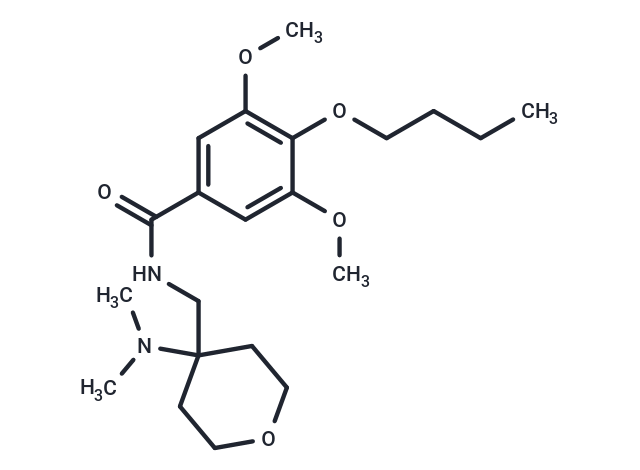Shopping Cart
- Remove All
 Your shopping cart is currently empty
Your shopping cart is currently empty

Opiranserin is a development as an injectable agent for the treatment of postoperative pain. Opiranserin is a non-opioid and non-NSAID analgesic candidate and is a dual antagonist of glycine transporter type 2 (GlyT2) and serotonin receptor 2A (5HT2A) (IC50s: 0.86 and 1.3 μM, respectively). Opiranserin displays antagonistic activity on rP2X3 (IC50=0.87 μM).

| Pack Size | Price | Availability | Quantity |
|---|---|---|---|
| 25 mg | $1,520 | 1-2 weeks | |
| 50 mg | $1,980 | 1-2 weeks | |
| 100 mg | $2,500 | 1-2 weeks |
| Description | Opiranserin is a development as an injectable agent for the treatment of postoperative pain. Opiranserin is a non-opioid and non-NSAID analgesic candidate and is a dual antagonist of glycine transporter type 2 (GlyT2) and serotonin receptor 2A (5HT2A) (IC50s: 0.86 and 1.3 μM, respectively). Opiranserin displays antagonistic activity on rP2X3 (IC50=0.87 μM). |
| Targets&IC50 | P2X3 (rat):0.87 μM, GlyT2:0.86 μM, 5-HT2A receptor:1.3 μM |
| Molecular Weight | 394.51 |
| Formula | C21H34N2O5 |
| Cas No. | 1441000-45-8 |
| Relative Density. | 1.12 g/cm3 (Predicted) |
| Storage | Powder: -20°C for 3 years | In solvent: -80°C for 1 year | Shipping with blue ice. |

Copyright © 2015-2025 TargetMol Chemicals Inc. All Rights Reserved.